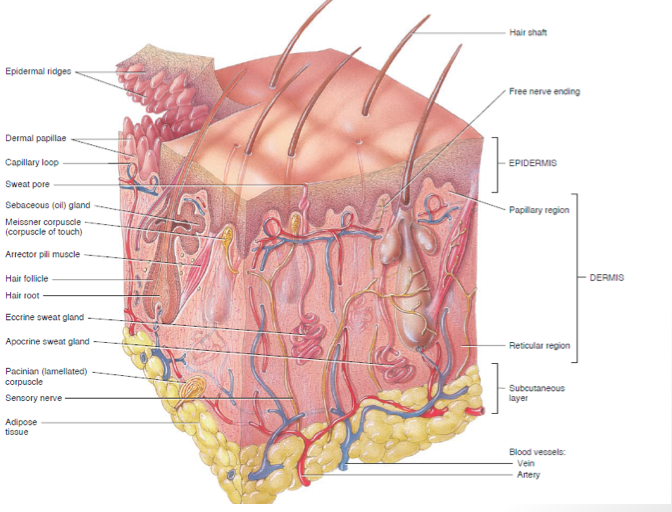1.A medical student is conducting an experiment related to body fluids. Part of his research requires a relatively precise estimation of extracellular body fluid in each volunteer. He knows that extracellular body fluid accounts for approximately 33% of the volume of total body water. Which of the following substances is most likely to be helpful to measure the volume of the extracellular body fluid? A. Evans blue B. Heavy water C. Mannitol D. Radio-iodine labeled serum albumin E. Tritiated water explanation: The med students are required to measure the vol. of ECF , for this purpose Mannitol is most likely to be used as it cant enter cells therefore its being restricted to ECF.
Posts
Integumentary system
- Get link
- Other Apps

Skin • Also known as Cutaneous membrane or Integument • A dult: • Area: 2 square meters (22 square feet) • Wt : 4.5-5 kg (10-11 lbs ) • 16% total body weight • Thickness: • Eyelids- 0.5mm (0.02 in) • Heels- 4mm (0.16 in) Most of the body- 1-2mm (0.04-0.08 in TYPES: Epidermis Epithelial tissue Dermis Connective tisue Hypodermis/ Subcutaneous tissue Fats, blood vessels Epidermis • 4 principal types of cells: • Keratinocytes (90%), melanocytes (8%), Langerhans cells, and Merkel cells • 5 layers: • Stratum corneum • Stratum lucidum • Stratum granulosa • Start to degenerate • Keratohyalin • Lamellar granules • Stratum spinosum • Stratum basale / stratum germinativum